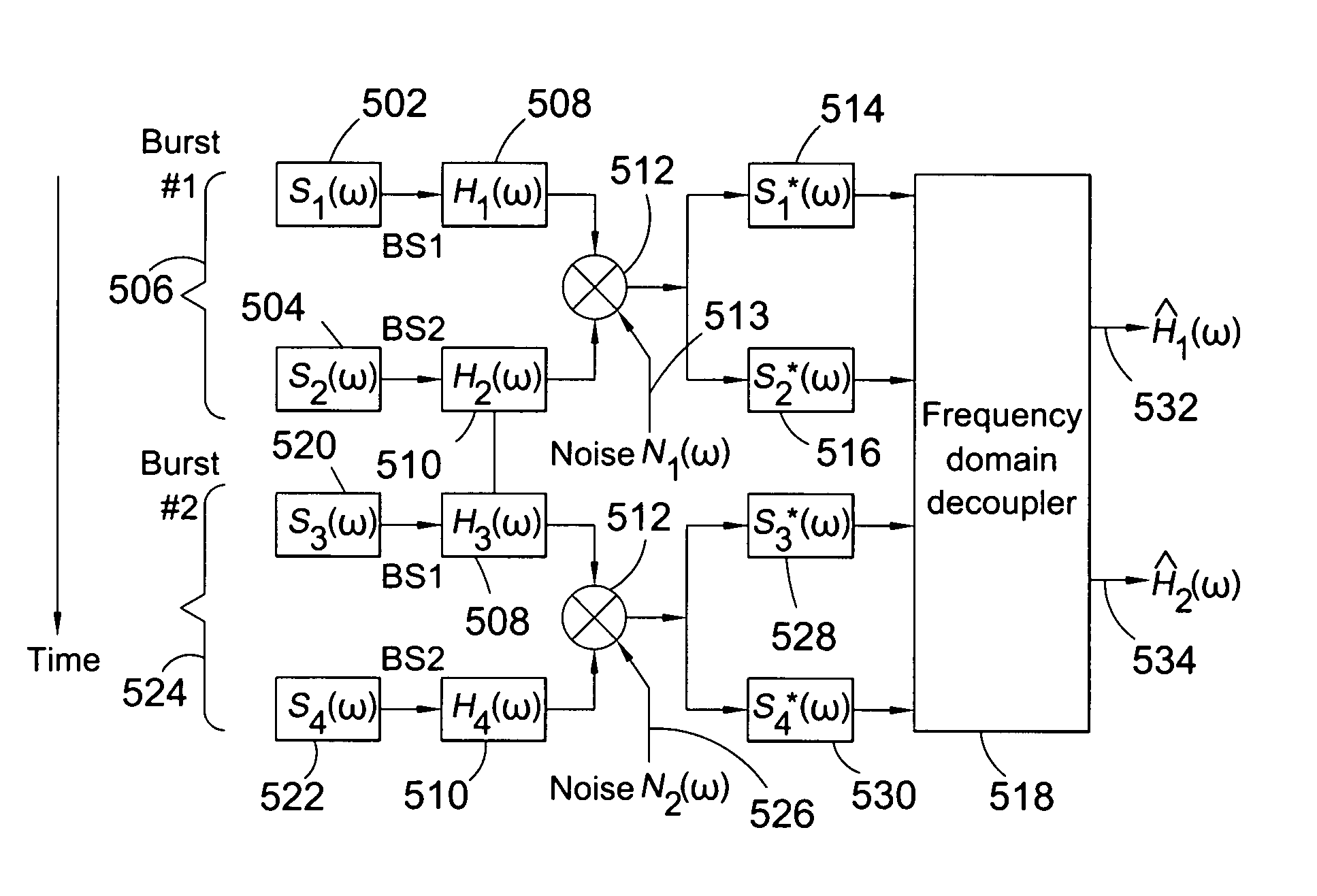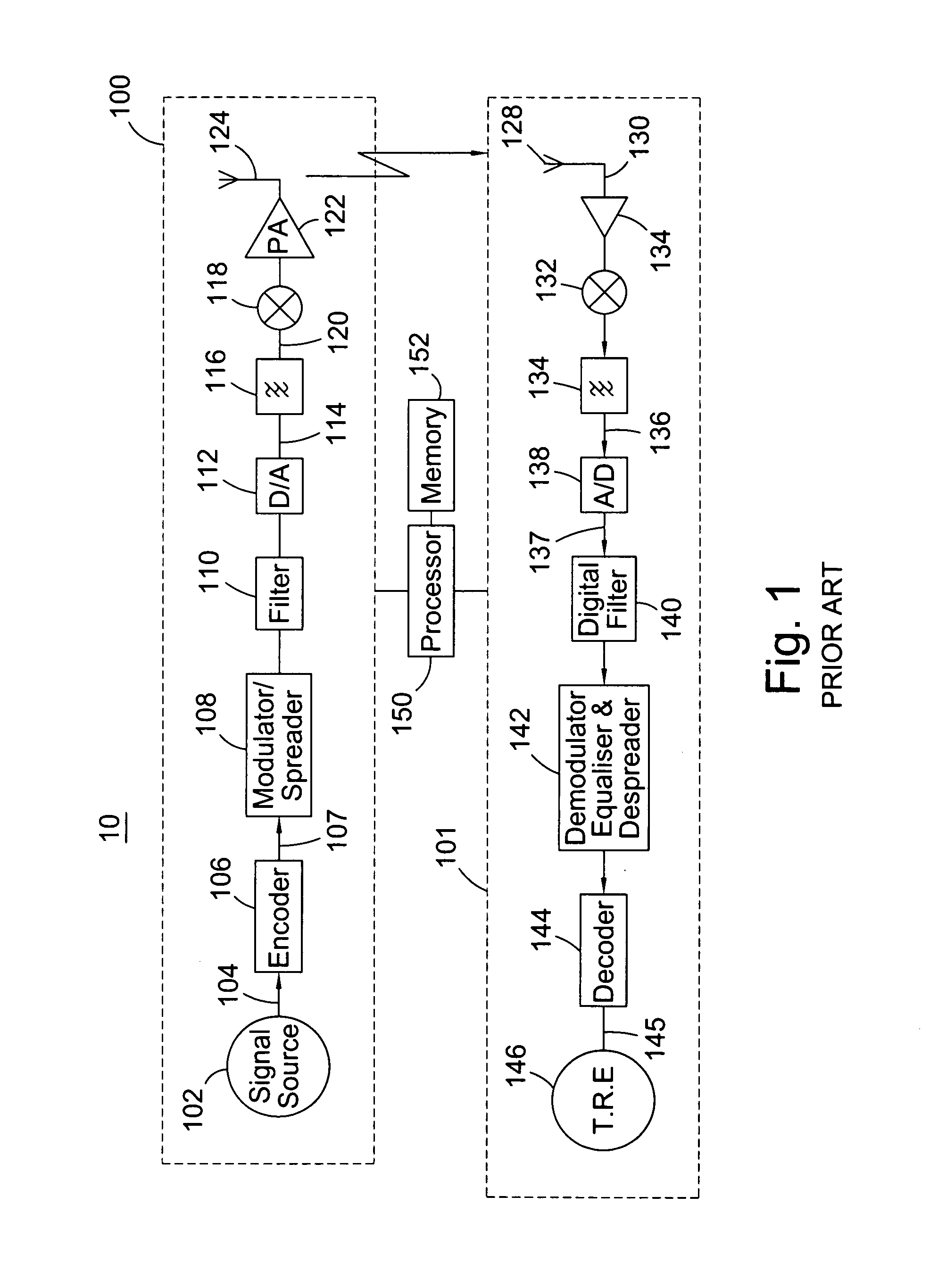Communication system and methods of estimating channel impulse responses therein
a communication system and channel impulse technology, applied in the field of communication system and channel impulse response estimation method, can solve the problems of inability to resolve individual channels/paths, and severe detrimental effects on the ability to recover data accurately, so as to improve channel estimation accuracy, reduce errors, and improve accuracy. effect of channel estimation
- Summary
- Abstract
- Description
- Claims
- Application Information
AI Technical Summary
Benefits of technology
Problems solved by technology
Method used
Image
Examples
Embodiment Construction
[0060]Before discussing the preferred embodiment of the present invention, it should be noted that consideration has been given to employing Steiner codes in combination with Wiener MMSE estimation in the Fourier domain to obtain a low cost multi-user channel estimation method that is highly efficient for simultaneously estimating a number of channels on the downlink for CDMA systems. Steiner codes may also be used in OFDM systems though, in this case, it may be preferred to use the intrinsic OFDM symbol for training sequences. Given only prior knowledge of the maximum extent of the channel impulse response, the same basic pilot sequence can be time shifted and re-used (with properly determined cyclic headers) to function for a number of different downlink channels, and only one FFT correlation process is needed to solve for all the channels simultaneously. The technique is ideal for wideband fat pipe systems where the same user signal is radiated from different antennas of a transm...
PUM
 Login to View More
Login to View More Abstract
Description
Claims
Application Information
 Login to View More
Login to View More - R&D
- Intellectual Property
- Life Sciences
- Materials
- Tech Scout
- Unparalleled Data Quality
- Higher Quality Content
- 60% Fewer Hallucinations
Browse by: Latest US Patents, China's latest patents, Technical Efficacy Thesaurus, Application Domain, Technology Topic, Popular Technical Reports.
© 2025 PatSnap. All rights reserved.Legal|Privacy policy|Modern Slavery Act Transparency Statement|Sitemap|About US| Contact US: help@patsnap.com



